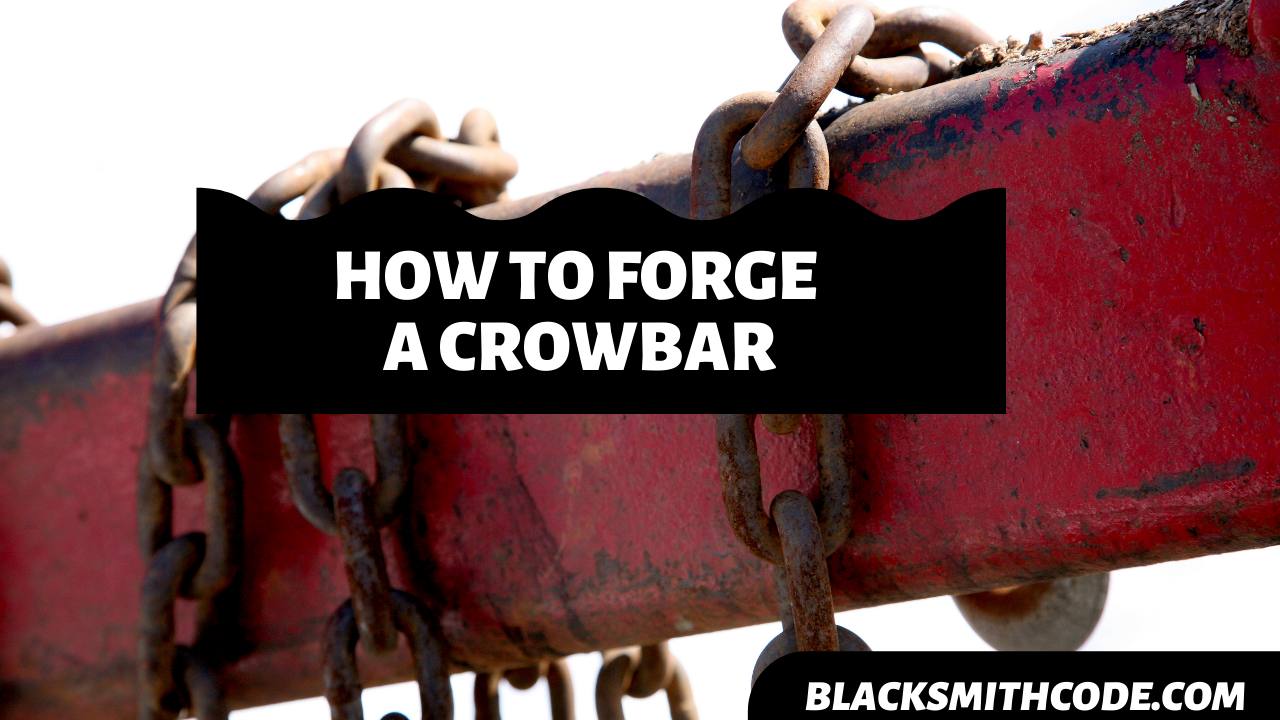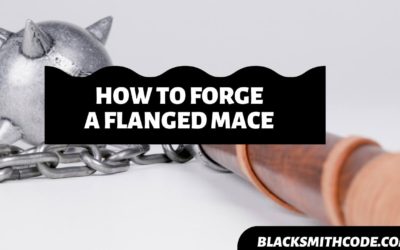Have you ever imagined forging a simple tool with a high level of utility? A crossbar is one of the easiest blacksmithing projects. Despite how easy it is, it is one of the most useful items in almost every sector. Find out how to forge a crossbar in this guide.
A crossbar is useful even for sporting events; it helps make demarcations, particularly demarcations that involve height. It is better to make the end of the metal slightly bent since it has to stand over two edges.
The forging process of a crossbar is as easy as it appears. You can forge a crossbar in less than half an hour if you know the right steps to follow. The process will even be more straightforward for those that have enough blacksmithing experience.
As long as you have the right tools and the right materials for the process, the information below will serve as an actionable guide for you to follow. In case you are wondering what the essential elements for the process are, you would find them below.
Instructions on How to Forge a Crossbar
Step 1: Get Your Materials
The first step in most blacksmithing projects is to get your materials and tools close. This step usually eases the stress of the process. Also, it will eliminate the probability of working halfway before realizing that something is missing.
For this process, you would need steel of suitable length. You can either get one of the desired measurement or cut it to suit your purpose.
Step 2: Measure and Cut
Now, it’s time to measure cut the steel bar into a suitable length. The length you would be cutting is dependent on the height of the crossbar that you intend to make. Also, while measuring, leave some extra length to accommodate the bending you would make at the tip.
Use suitable measuring material for this process. Then cut out the appropriate length from the steel bar. You should also measure the range that would form the curve part of the crossbar.
Step 3: Heat
You have to put your forge to use. Note that you are not heating the entire steel at the same time. You are only heating the edges of the steel bar, and you are not doing it simultaneously.
You have to heat the tips of the bar one after the next. Heat only the part you want to work on at that point.
Step 4: Hammering
Although the hammering process involved in forging a crossbar is not tedious, it requires a high level of technique. Also, the hammering of the two ends is different from each other.
Quick Steps
- Pick the side that will form the curve/hook of the crossbar.
- Heat that end of the steel bar till you reach a workable temperature.
- Start by hammering down the tip of the steel bar.
- Keep hammering until to have a flat edge or tip.
- You might have to reheat the steel during the hammering process to keep the material at a workable temperature.
- Once you have a flat side, heat and repeat the same process for the other end of the steel bar.
- You would only round up your hammering when you have a flat tip on both sides.
Step 5: Grinding
Once you achieve your desired result from the hammering process, it is time to grind the edges. The grinding process is easy, especially for those that are familiar with grinding operations.
Grind the rough edge of the tip. The aim of the grinding is to smoothen and level the sharp edges that might have resulted from hammering.
Step 6: Form the Bend
Now, it is time to take the steel bar back to the forge. Prepare your forge and place the side you have chosen to form the curve. Remember that the curve you are creating should give you something similar to an S shape.
However, the other end of the S shape will be the extension of the steel bar rather than being curved too.
Quick Steps
- Place the edge of the steel bar in the forge and heat it to a workable temperature.
- Place it over the pointed part of your anvil and hammer down to bend.
- Now, this is where your technique comes in. Place the middle of the heated part on the horn and hammer don towards the end to form the first curve.
- Find a suitable spot to make the second curve until you have a semi S-shape.
Step 7: Finishing
The finishing process of a crossbar is not rigid. You can select the finishing process based on the purpose of the crossbar. Depending on it, you need it to be fancy or for just a rough job.
FAQs on How to Forge a Crossbar
Question
How long does to take to forge a crossbar?
Forging a crossbar is not time-consuming. The only process that might seem complicated for beginners is the hammering. On average, it takes less than an hour to forge sets of the crossbar.
Question
Can I make a crossbar for commercial sale?
Of course, you can make a crossbar for commercial purposes. It is of high demand because it has a lot of uses. It is useful for forming a crucial part of the bicycle and many others purposes.
Question
Can I Forge a crossbar from scrap materials?
Forging a crossbar from a scrap material is possible, depending on the scrap in question. You might need a scrap material that already has the shape of a steel bar to save yourself a lot of stress.
Using a scrap metal that already has the shape of a steel bar will only require you to fine tune the bar. However, anything other than that might require you to forge out a bar from the material before moving on with the forging process of a crossbar.
Video on How to Forge a Crossbar
Precautions and Warnings
- Ensure the use of gloves, apron, and other blacksmithing protective wears.
- Do not try to handle hot steel with bare hands to avoid burn.
- Avoid the use of a damaged tool and stay away from devices that you are not familiar with using.





